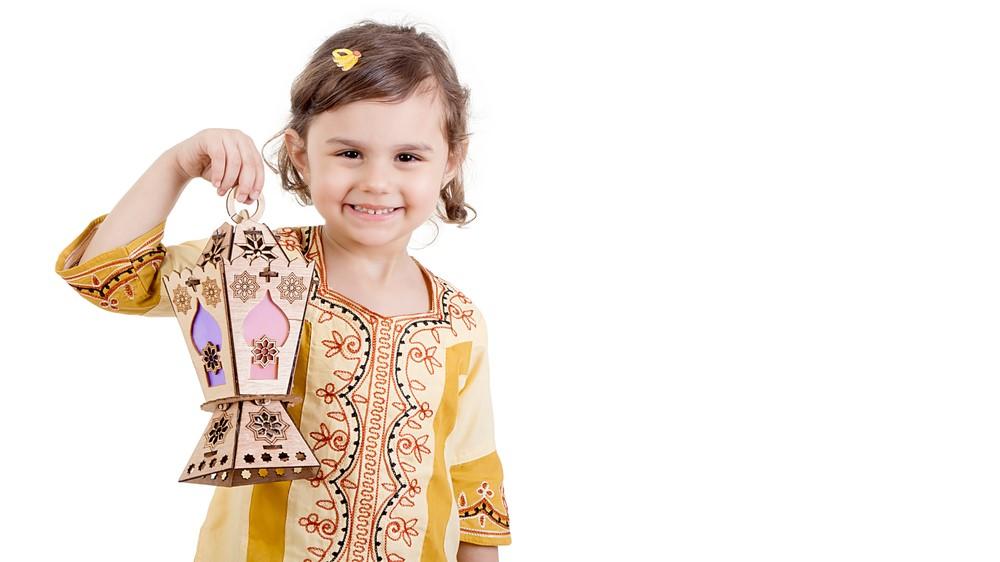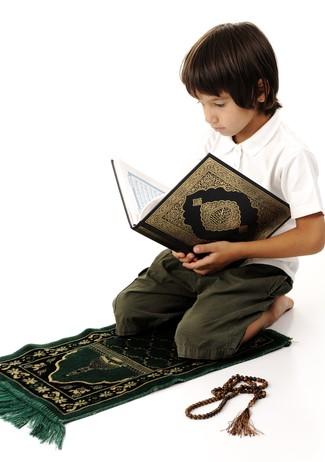
For the Islamic community, Ramadan is the most religious month of the year as it is the month of fasting (sawm) and represents the time when Muslims look to grow closer to Allah (SWT).
This is a tradition that has been followed for generations, with parents teaching children about Ramadan and its values early on.
Ramadan for kids is a little bit different than it is for the average adult. For starters, under the Ramadan rules for children, they are not expected to fast during daylight hours. Despite this, some parents do encourage children (particularly those closer to the age of puberty) to fast either for part of the day or on selected days. This is to prepare them for what is expected when they reach adulthood.
Young children may not understand the significance of Ramadan for a good while, but it is always good to encourage them to get involved with at least some of the traditions of the auspicious months – even if they do not do all of them. During Ramadan, children fasting is not a requirement, especially for younger ones. This means small children should continue to eat and drink during the day, but it’s important to note that food and water are not the be-all and end-all of sawm; it also includes feelings and acts of anger.
While still eating and drinking, young children can be encouraged to observe the fast in their own way by not displaying such emotion. Of course, this may not always be possible depending on age (any parent will know that sometimes, you have to grin and bear it), but teaching this from an early age will help to ingrain this tradition into their way of life.
It is also traditional for Muslims to recite the Holy Qur’an from start to finish, especially during the last 10 days of Ramadan to coincide with Laylat al-Qadr (the Night of Power). This is alongside increased prayer and intent, which even the youngest children can join in with.
If parents do not take the time to sit down and explain to children the history of Ramadan and why we follow the rules and traditions we do, they will struggle to understand. The trick is to simplify the significance of Ramadan for children as much as possible so they can easily grasp that there is a meaning behind the change in behaviour that takes place.
The Prophet Muhammad (SAW) was the recipient of the word of Allah (SWT) via the angel Gabriel during the month of Ramadan, with many believing this to fall on the 27th night of the ninth month. The Prophet (SAW) would often meditate in a cave just outside of Mecca, which is why the tradition of sawm has been carried over for hundreds of years.

We can incorporate teaching children about the history of Ramadan into our own means of becoming closer to Allah (SWT), by sharing his words with our children and ensuring that His message lives on.
Special versions of the Qur’an for children are available which can further help with religious teachings and cement the understanding between events like Ramadan and children.
When Ramadan is over, the celebration of breaking the fast, Eid ul-Fitr, commences, and it is a grand occasion for Muslims around the world. This is the time that friends and family come together to share food, as well as give gifts to one another – especially to children. Some common Eid/Ramadan gifts for kids include books, new clothes, and small toys. They also receive money.
The best way to explain the significance of this Eid as opposed to Eid ul-Adha to someone unfamiliar with Islam is to compare it to Christmas in Christianity. It is a three-day festival during which Muslims will take time off from work (unless they are residing in a Muslim country, then it will be a national holiday).
Children love to get involved in the festivities, and one such way is to decorate the home for the Eid festival. This is a fantastic excuse to get the arts and crafts material out of the cupboard and encourage the little ones to get messy! Children always love to see their works of art proudly displayed on the wall for all to see, and it can be a great way to teach them why we celebrate Eid.
As all Muslim adults will know, charity is a major part of Islam (with Zakat making up one of the five pillars), and it is obligatory to make a Zakat ul-Fitr payment. Although children do not make this payment themselves as they do not have their own source of income, the head of household makes a payment on their behalf.
Some children, especially older children, are likely to receive a regular allowance (pocket money) that they can use how they please from their parents. This helps to teach them the value of money. The Zakat-ul-Fitr payment, around £5, can be taken from this allowance, therefore teaching children in the family the value and significance of this Ramadan tradition. Parents should sit down and explain why this payment is made and what the funds will be used for. Such payment can be made direct to ILM through our donations page here.
Your kind donations help ILM continue to support hundreds of thousands of innocent lives in need around the world. When you donate to any of our worthwhile causes, we can keep you updated with how your funds are being used, such as providing an education to children who are less fortunate. This is handy for teaching your children how our charity in Ramadan helps to make a difference.